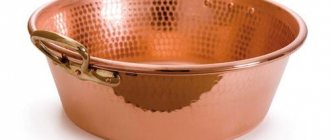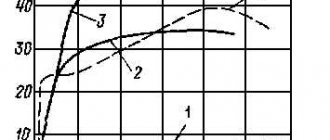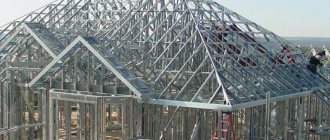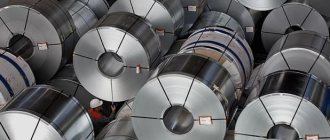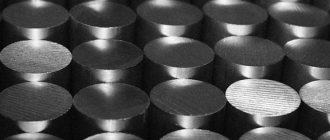Metal grades st20 and 09g2s are in demand in the market of pipes and pipeline fittings. They are used in domestic and foreign industry for the production of:
- rolled metal;
- welded structures;
- bends, supports and locking mechanisms;
- tees and transitions.
Their popularity is associated with high performance characteristics, which allow them to be used in regions with critically low outside temperatures, in high-pressure systems and sudden changes.
Despite the use of these brands in the same areas, their type and individual chemical and physical parameters differ. Therefore, the manufacturer selects the appropriate material in accordance with technical specifications, state and industry standards, and the characteristics of the transported working environment.
Steel 20 - characteristics
St20 refers to structural carbon steel. It is plastic, there are no restrictions on weldability. Parts are produced by drawing, casting with additional thermochemical treatment, hot and cold deformation methods.
The chemical composition includes the following elements:
- carbon content from 0.17 to 0.24% depending on the design;
- magnesium - up to 0.65%, silicon - up to 0.37%;
- phosphorus - up to 0.035%;
- other elements, including harmful ones, no more than 0.3%.
Alloying the metal with other elements improves the performance characteristics of the material. For example, adding up to 0.25% chromium increases resistance to moisture, so rolled metal is better protected from corrosion.
- The hardness of the material depends on whether heat treatment has been carried out. It varies between 372–412 MPa for pipes and rolled metal, the yield strength is 225–245 MPa.
- Operating temperature is from -40 to 450C, therefore suitable for use in the northern regions of the country.
- It has average thermal conductivity, which ensures optimal heating and cooling rates during product transportation.
Photos of products from Art. 20
GOST 380-94
Carbon steel of ordinary quality is produced in the following grades: St0, St1kp, St1ps, St1sp, St2kp, St2ps, St2sp, St3kp, St3ps, St3sp, St3Gps, St3Gsp, St4kp, St4ps, St4sp, St5ps, St5sp, St5Gps, St6ps, St6sp, etc. The letters St stand for steel. The numbers 0, 1, 2, 3, 4, 5, 6 are the conventional brand number depending on the chemical composition. Increasing the number means increasing carbon content and tensile strength. The degree of deoxidation of steel is indicated by letters after the numbers: kp - boiling (the cheapest according to the production method); ps - semi-calm; sp - calm. These letters should not be particularly confusing (these are the subtleties of the steel smelting process), but the first number characterizes mechanical strength. When it comes to pipes, sometimes numbers from 1 to 6 appear after the letters (for example: St3sp5), which indicate the category of rolled products from which the pipe is made (the higher the number, the more parameters are standardized and the better). St3 is the most common. When specifying the grade of steel for pipes, the letters A, B, C or D (most often C) appear before St. These letters characterize the pipe (GOST 10705-80, GOST 10706-76). The pipe is divided into groups depending on which properties are standardized (A - mechanical properties of the material, B - chemical composition of steel, C - both, D - only hydraulic test pressure is standardized). Examples: VSt3sp5, BSt2sp3, etc.
Steel 09g2s - characteristics
The decoding indicates the composition and characteristics of the material.
- 09 - volume of carbon in the chemical composition (0.09%);
- g2 - manganese content (varies from 1.2% to 2%);
- C - silicon, the number at the end of the marking indicates its amount, in this case less than 1%.
Alloying of steel is not limited to these three components. Nickel, sulfur, phosphorus and other elements are added to the composition, but their total content is no more than 2%. The density is about 7800 kg/m3, it is reduced by adding copper or cobalt, and increased by tungsten.
The metal is easily welded, so it is used to organize technological lines for civil and industrial purposes. It is resistant to critically low temperatures (down to -70C), therefore it is used in the oil and gas industry in the northern regions of the country.
Hardness is determined using several systems depending on the type of product. Limit characteristics are regulated by technical specifications 14-3-1128-2000.
The chemical composition and performance properties of products from foreign manufacturers may differ from those operating in Russia and the CIS countries, which is due to differences in the requirements of state standards.
Application difference
St20 has a low operating temperature. This means that metal products heat up quickly, and their ductility increases. With strong cooling, on the contrary, the structure becomes fragile.
Therefore, in harsh conditions, 09g2s steel is used, which is easy to weld and is suitable for use in areas where high wear resistance is required. In economic terms, 20 is cheaper, so it is often chosen in industry where the temperature range is not important.
Steel 09g2s is a very popular steel, used both in construction and in many industries. There are domestic and foreign analogues of this type. It is most often used for the manufacture of pipes, rolled metal and welded metal structures, the temperature range of which is from -70 to 425 0 C9 with permissible loads on them).
Differences
Steels differ in the content of chemical elements, which entails differences in application.
St20 expands under the influence of high temperatures and becomes plastic. At low temperatures it becomes brittle. It is a cheaper brand compared to 09g2s.
St.09g2s retains its original characteristics and is more wear-resistant. Therefore, it is used for the production of steel elements, which are subject to increased requirements for resistance and temperature changes.
Source
Steel 09g2s 12: decoding
Understanding how labeling is formed allows you to clearly understand what product the manufacturer represents, as well as its main features. For those who are interested in details about 09g2s, the breakdown of steel is as follows:
- 09 – quantitative fraction of carbon content in the alloy (0.09%);
- G2 is manganese and its part in the entire volume fluctuates around 2% (the exact figure ranges from 1.3 to 2%);
- C - denotes silicon, the absence of numbers after the symbol indicates that it is less than 1%.
Thus, the decoding of 09g2s clearly looks like this:
| Element | Content, % |
| C (carbon) | up to 0.12 |
| Si (silicon) | 0,5 – 0,8 |
| Mn (magnesium) | 1,3- 1,7 |
| Ni (nickel) | up to 0.3 |
| S (sulfur) | up to 0.04 |
| P (phosphorus) | up to 0.035 |
| Cr (chromium) | up to 0.3 |
| N (nitrogen) | up to 0.008 |
| Cu (copper) | up to 0.3 |
| As (arsenic) | up to 0.08 |
| Fe (iron) | 96-97 |
As can be seen from the table, the interpretation of steel 09g2s is not limited to only three alloying components. In addition to carbon, silicon and manganese, it is supplemented by the following elements: nickel, sulfur, phosphorus, chromium, nitrogen, copper, etc. The percentage component of alloying metals is no more than 1-2 total%.
Marking 09g2s on a steel sheet
Also, for steel 09g2s, not only the alloying level is taken into account, but also other factors. Here are just a few of them that are significant for a particular case:
- constructiveness (purpose);
- eutectoid (structure: hexagonal, cubic, etc.; changes after hardening, etc.);
- production method (open hearth, conventional or electric steel);
- chem. steel composition 09g2s (in this case low-alloy).
As a result, analogues appear in relation to which questions like the following are often asked: is 345 steel 09g2s ? The designation C345 was introduced for builders , where the numbers do not indicate the chemical composition of the material, but its important property - the yield strength; for steel 09g2s it corresponds to the construction standards C345, which is reflected in a number of GOSTs (27772-88).
Below, several classic options are considered, including when one grade of steel corresponds to several strength classes.
Read also: Make a milking machine with your own hands
Characteristics st.09g2s
Grade 09g2s is a structural low-alloy steel. This metal is used for the production of parts, mechanisms and structures in the automotive industry and construction.
Deciphering the chemical composition:
- 09 — carbon © ‒ 0.09%;
- g2 - manganese (Mn) - from 1.2% to 2%;
- c – silicon (Si) – up to 1%.
In addition, the chemical composition may include the following alloying elements: nickel (Ni), sulfur (S), nitrogen (N), phosphorus (P) and other substances, in percentages not exceeding 2%.
Properties of st.09g2s:
- temperature range: from −70 to +425 degrees;
- specific gravity - 7850 kg/m3;
- density is approximately 7800 kg/m3, in the presence of copper and cobalt it decreases, tungsten increases it;
- no deformation;
- resistance to variable force vector;
- ease of welding with and without preheating;
- plastic;
- average thermal conductivity ensures uniform heating and cooling during product transportation;
- resistance to the formation of flakes and micropores;
- no temper brittleness.
Application area:
- oil industry;
- creation of technological lines for civil and industrial purposes;
- gas industry.
Technical characteristics: subtleties of using reference manuals
The properties of 09g2s steel are largely determined by the chemical composition of the alloy, its specific parameters, which today are quite accurately calculated by metallurgists.
Steel grade 09g2s has the following critical points :
- Ac1 = 732, when austenite transforms into pearlite during cooling processes;
- Ac3(Acm) = 870 (s – from French chauffage/heating) the end point of cementite dissolution;
- Ar3(Arcm) = 854 (refro >The symbols are classic, numbers 1 and 3 indicate the numbers of points on the graph. Symbols cm usually mark hypereutectoid steels.
If we talk about other features of St 09g2s, the following characteristics are noted: easy weldability of the material . For this purpose, RDS, ADS under flux and gas protection are used. Only products that have undergone chemical-thermal treatment cannot be welded.
The mechanical properties of steel 09g2s are tabular values that were developed by a number of GOST standards and describe the material at room temperature, as well as for its other states.
Among the important mechanical properties of 09g2s steel are the following:
- Yield strength for permanent deformation, measured in MPa;
- Relative values of elongation at break and contraction;
- Impact strength (use under load is one of the main applications);
- Brinell hardness (HB).
Strength class of steel 09g2s: the table for the list of grades includes the one indicated, which, as already noted, corresponds to C345 . This also includes a number of other brands. Thus, steels that are different in chemical composition and even in the method of producing steel can have the same strength class. This data can be found for 09g2s according to GOST 19281-2014; the characteristics of the alloys are presented in convenient tables that are easy to navigate. You can view (download) GOST 19281-2014 here .
But the opposite situation is also possible. For example, for 09g2s GOST 19281-89 and grade 16GS there is data on strength classes 265 and 296.
The same GOST describes the types of rolled metal:
- Varietal, round, shaped with various sections (including circle 09g2s).
- Wideband profiles with a certain thickness of products.
Large diameter circles steel 09g2s
Similar information is provided for other brands.
The density of steel 09g2s fluctuates, somewhere around the mark of 7800 kg/m 3. But alloying elements can either increase the specific gravity or reduce it. Tungsten tends to be the first. The second is achieved by adding: cobalt, nickel, copper.
The hardness of steel 09g2s can be determined by Brinell, Rockwell, Vickers, etc. the choice of system is determined by the type of products for which parameter determination is required. It is also important when choosing a welding method; the hardness of the steel at the weld should remain fairly high.
Most of the listed parameters can be found in TU 14 3 1128 2000 for steel 09g2s, as well as for other grades. The technical specifications describe the requirements for the materials from which pipes are made for servicing gas fields and other areas of the industry.
The permissible stress for steel 09g2s is calculated depending on the following values:
- strength class and grade;
- temperatures at which it will be operated;
- thickness, sometimes configurations (circle, sheet, etc.).
Existing 09g2s analogues are foreign (European, Asian, others), most similar in mechanical and technical properties to the specified brand. However, the chemical composition can vary greatly. The Bulgarian version of this brand has the closest configuration.
Steel 09g2s: characteristics and application
The main areas of use of this brand: sheet and shaped products. For hot-rolled strip, GOST 103-2006 standards are used, but steel circles are in accordance with GOST 2590-2006.
As already noted, steel 09g2s and analogues are easy to weld. The characteristics already listed allow the use of this material for products that require high wear resistance: beams, channels, corners.
Brand 09g2s, its technical characteristics, are necessary in the creation of vehicles, construction, oil and chemical industries. A wide temperature range allows the material to be used where severe deformations occur over a long service life. At the same time, the limiting temperature of -70 degrees facilitates the use of products made from St. 09g2s in harsh climatic conditions.
Steel 09g2s is used in the construction of RVS for storing petroleum products in the North
Steel 09g2s-15 also fits this description well. It is used for all of the above points. It only remains to add that in addition to welding, installation can be carried out using bolted connecting elements. The metal's resistance to chemical influences makes it interesting in the relevant industry. At the same time, high mechanical qualities are used for the construction of bridges, roads, port stations, etc.
The 09g2s-12 brand is also popular among builders. It also has stable plastic properties. It is distinguished by a special chemical composition, which includes arsenic. Used for the manufacture of pipeline fittings. Cannot be used in the food industry.
In the north of Russia, many kilometers of pipelines were built using just this brand. There, more than anywhere else, frost resistance and easy weldability of products are useful. This allows you to create complex, at the same time socially significant objects (metal structures) from 09g2s and analogues.
At the same time, for cities with a temperate or continental climate, steel 09g2s according to GOST standards of various numbers is suitable for beautifying streets. Square pipe is extremely popular as fencing, posts for billboards, installation of mobile trading platforms, and much more. For the same purposes, the rectangular configuration of products is used.
Steel 09g2s, the characteristics of which have already been discussed in some detail in this presentation, is of interest to welders, regardless of the method of performing work. Flanges made of this material are especially popular. Features of the work are described in GOST 19281-73. The craftsmen are quite welcoming to the news about the need to work with this brand.
The boiler tank itself is made of steel 09g2s
Steel 09g2s with different strength classes can be used for the production of steam boilers, as well as equipment used in the agricultural complex. Details about the requirements for steel 09g2s in GOST-5520 79.
An additional reason for using alloys of this brand is high efficiency, achieved not only due to low cost of production. The ease and speed of construction of buildings, structures, installation of equipment also allows you to optimize the costs of enterprises in various industries.
Read also: How to clean a whetstone
Features of electric welding
There are special requirements for working with this material, which are determined by the need to comply with the technological process. The need to maintain the strength of steel at seams has already been noted. However, under normal conditions it is hardly possible to achieve an absolutely positive result.
For example, the condition for preventing overheating is achieved by using low currents of 40-50 A / 1 mm electrode. Welding work is accompanied by subsequent hardening of materials at a temperature of 650 0 C. However, based on the critical points of the alloy, you can make your own calculations for carrying out these works. Moreover, the specified hardening T is applied sequentially to every 25 mm of the seam, for about an hour. Cooling is carried out in ordinary water or in air. Thanks to technology, they achieve quality that is not inferior in properties to even more expensive alloys.
Comparison with another steel grade
For example, for 09g2s and st3 the difference is determined primarily by the carbon content. For St3sp it is 10-20 times higher than what is found in the low-alloy alloy.
St3sp – refers to carbon alloys. This grade of steel is characterized by high brittleness and rapid destruction at low temperatures. If the brand being described has a lower limit of -70 degrees, then the object of comparison is only -20.
The quality of St3sp is ordinary, which indicates a likely high presence of sulfur and phosphorus. Then, like 09g2s is high quality. All other advantages are already in the previous description. It only remains to note that the cost of this brand is significantly higher than the price of St3sp.
Video about low alloy steels:
The most common steel grades. What to choose?
The main steel grades presented on the used steel pipe market are ordinary quality carbon steel GOST 380-94, high-quality carbon steel GOST 1050-88 and high-strength low-alloy structural steel GOST 19281-89. Note: steel quality is a set of properties provided by the metallurgical process, such as the uniformity of the chemical composition, structure and properties of steel, and its manufacturability. These properties depend on the content of gases (oxygen, nitrogen, hydrogen) and harmful impurities - sulfur and phosphorus.
Recycled raw materials
The variety of products is great, the entire range is easy to see simply by Googling or visiting any pipe bulletin board or for rolled metal products. A huge number of channels, corners, etc. Moreover, it is not always clear how the authors set the cost.
For example, the question with the content: “steel 09g2s price per ton” is simply baffling. After all, the decoding does not speak about the type of rental, nor about its other properties and qualities.
By the way, we have already written an article about scrap steel 09g2s - it describes in more detail the recycling of this steel.
Moreover, there are excellent categories when they want to sell old scrap 09g2s, new products, or simply materials that have already become unusable. Therefore, the price for this type of metal is rarely fixed. Only what is recycled is taken by weight. Channels and other items are accepted individually as business scrap with a price. Rolled sheets are measured by footage. But in principle, these data can also be calculated by weight, subject to the purchase of large quantities. But then both parties run the risk of cutting prices, because the number of products may differ slightly with this method.
Steel grades st3PS/SP and 09G2S
What is the difference between steel grades st3PS/SP and 09G2S
Knowing and being able to distinguish steel grades is necessary for everyone involved in the production of metal products of any purpose and type. In this article we will look at two types of steel and determine what their indices mean and how this affects their scope of application.
Characteristics of high strength steel
Weldability
| no limits | welding is performed without heating and without subsequent heat treatment |
| limited weldability | welding is possible when heated to 100-120 degrees. and subsequent heat treatment |
| difficult to weld | To obtain high-quality welded joints, additional operations are required: heating to 200-300 degrees. during welding, heat treatment after welding - annealing |
High strength steel grades
Steel is one of the most important materials that is used in almost all industries. Depending on the application, high-strength steel has different requirements. Steel grades differ in structure, chemical composition and in their properties (physical and mechanical). Steel is a deformable alloy of iron with carbohydrate (no more than 2 percent) and admixtures of other elements: manganese, silicon, phosphorus. Special requirements are placed on high-strength fasteners. Therefore, to obtain steel that will ideally meet all characteristics, special impurities are added - alloying elements. These are chromium, tungsten, vanadium, titanium, manganese or silicon.
Steel 20
Quality carbon structural steel
pipes for superheaters, manifolds and pipelines of high-pressure boilers, sheets for stamped parts, cemented parts for long and very long service at temperatures from -40 to 350 degrees.
STEEL GRADE 3
Regular quality carbon steel. This type of steel is in greatest demand in construction. The reason for this popularity is manufacturability, durability and an attractive price. Another advantage of this alloy is the ability to make products from it that can withstand heavy loads and have good impact resistance. Steel 3 is produced according to GOST 380-94, according to which steel is marked with the letters “St” with a serial number from 0 to 6. The higher this number, the greater the amount of carbon contained in the steel. This means better strength, but worse plastic characteristics. Steel 3 welds well, is non-flocene sensitive, and is not prone to temper brittleness. Steel 3 contains: carbon – 0.14-0.22%, silicon – 0.05-0.17%, manganese – 0.4-0.65%, nickel, copper, chromium – no more than 0.3%, arsenic no more than 0.08%, sulfur and phosphorus - up to 0.05 and 0.04%. The amount of these components in the St3 alloy is not allowed above the specified values. The basis of steel is ferrite. Its characteristics do not allow it to be used in its pure form. To improve the strength of ferrite, steel is saturated with carbon, chromium, nickel, silicon, manganese are added (alloyed) and additional thermal hardening is carried out. Steel 3 withstands a wide temperature range under variable loads. It welds well, is stamped in cold and hot conditions, and is drawn. Can be used without heat treatment.
Weldability of steel 3
Without restrictions - welding is carried out without heating and without subsequent heat treatment. In steel classified as good, the carbon content is less than 0.25%. They are welded without the formation of hardening structures and cracks in a wide range of welding conditions. Application temperature
Steel application temperature 3
The minimum application temperature (the temperature of the coldest five-day period in the region) is minus 30. The maximum application temperature is plus 300.
STEEL GRADE 35
High quality medium carbon steel. This type of steel is used for parts that require high ductility and impact resistance. High-quality carbon steels of type 35 are manufactured according to GOST 1050-88 and are marked with two-digit numbers that indicate the average carbon content in hundredths of a percent. For example, steel 35 (0.35%). It has high strength (σв = 640...730 MPa, σ0.2 = 380...430 MPa) and relatively low ductility (δ = 9...14%, ψ = 40...50%). In addition, this type of steel is not susceptible to medium stress, is resistant to deformation and wear, and is not subject to cracking and corrosion. Therefore, steel 35 is used in the production of high-strength fasteners and flange connections. Temperature range: -40 to +450 degrees Celsius Steel 35 is weldable to a limited extent. Methods of welding RDS, ADS submerged arc and gas shield, ESW. We recommend heating and subsequent heat treatment. CTS without restrictions.
Read also: How to make a potato digger with your own hands video
Weldability of steel 35
Structural grade 35 has limited weldability. With an increase in carbon in the steel, the heat-affected zone and the weld are hardened, hardness increases, and welded joints become more brittle and prone to cracking. Satisfactory steels have a carbon content of 0.25 to 0.35%. They are less prone to cracking and, with the correct welding conditions, a high-quality seam is obtained. To improve the quality of welding, heating is often used.
Steel application temperature 35
The minimum application temperature (the temperature of the coldest five-day period in the region) is minus 40. The maximum application temperature is plus 425.
STEEL GRADE 35X
Alloy steel, chromium Fasteners made of 35X have high structural strength and guarantee structural reliability. In addition, 35X resists impact loads well, has a large reserve of toughness and high fatigue resistance. 35X steel has high resistance to wear, corrosion, cracks and other defects. The main advantage of fasteners made from 35X alloy structural steel over carbon ones is higher strength due to ferrite hardening and greater hardenability, less growth of austenite grains when heated, and increased impact strength. And the level of mechanical properties is increased due to heat treatment.
Weldability of steel 35x
Steel application temperature 35x
The minimum application temperature (the temperature of the coldest five-day period in the region) is minus 40. The maximum application temperature is plus 425.
Steel grade 40x
Structural alloy steel.
40X steel contains 0.40% carbon and less than 1.5% chromium. This steel is quite difficult to weld. Therefore, in order to obtain a high-quality welded joint, additional operations are necessary. When welding, heating to 200-300 degrees will be required, and then heat treatment by annealing. Thanks to the addition of chromium, steel 40X fasteners have hardness, strength, heat resistance and corrosion resistance. Steel 40X is designed for significant loads. Mechanical properties of steel 40x: short-term strength - 570 - 940 MPa, proportionality limit - 320 - 800 MPa, relative elongation - 13 - 17%, relative contraction - 35 - 55%, impact strength - 400 - 850 kJ / sq.m. The advantages of this steel grade: resistance to high and low temperatures and their sudden changes, can be used outdoors and even in aggressive, humid environments. Another undeniable advantage of fasteners made from this particular grade of steel is the absence of the need to process and clean the surface.
Weldability of steel 40x
Limited weldability. Preheating and subsequent heat treatment are recommended.
Steel application temperature 40x
The minimum application temperature (the temperature of the coldest five-day period in the region) is minus 40. The maximum application temperature is plus 425.
STEEL GRADE 45
45 steel has high durability and strength. Steel 45 is used in the manufacture of mechanical parts used under increased loads and requiring resistance (impact, friction). The mechanical properties of this steel allow it to withstand significant temperature changes and other adverse climatic influences. This steel can withstand temperature tests from 200 to 600 degrees Celsius. When using Art. 45 it should be remembered that: • strength decreases when heated to 200 0C; • steel is difficult to weld and is characterized by low flon sensitivity. Steel grade 45 - medium carbon; ideal for the manufacture of parts that require high strength or high surface hardness, as well as parts that are moderately loaded and not subject to abrasion during operation.
Weldability of steel 45
High-carbon steel grade 45 is recommended to be joined by resistance welding. Limited weldability steels have a carbon content of 0.36 to 0.45% and are prone to cracking. Welding requires mandatory heating. When welding them, special technological processes are required.
Steel application temperature 45
The minimum application temperature (the temperature of the coldest five-day period in the region) is minus 40. The maximum application temperature is plus 425.
Steel grade 09G2S
Low alloy structural steel.
The designation 09G2S indicates that the steel contains 0.09% carbon, the letter “G” means manganese, and the number 2 indicates a percentage of up to 2% manganese. The letter "C" stands for silicon, silicon content less than 1%. The main advantage of this steel is its high mechanical strength, which allows the use of thinner parts compared to parts made from other steels. This means that parts made of 09G2S have less weight, which is more economically profitable. In addition, another advantage of this steel is its low tendency to temper brittleness.
Weldability of steel 09g2s
Steel grade 09G2S is widely used for welded structures. Welding can be done either without heating or with preheating up to 100-120 degrees Celsius. Welding is quite simple, and the steel is not hardened or overheated during the welding process, so there is no decrease in plastic properties or an increase in its grain size. At air temperatures of minus 15 °C and below, local preliminary heating is used, regardless of the thickness of the steel.
